|
Were These Miniature Binoculars Used as Spy Equipment? Wurden diese Miniatur Fernglas als Spionage Ausrüstung? Ces Jumelles Miniatures Utilisés Comme Matériel D'espionnage? これらのミニチュアの双眼鏡は 活動のために使われましたか? Эти миниатюрные бинокль используется для шпионажа? Är Dessa Miniatyr Kikare Spion Utrustning? Los Prismáticos en Miniatura Como Equipos de Espionaje? Sono Questi Binocoli in Miniatura Utilzzati Come Appaarecchiature Spia? |
|
To answer the question as to whether these miniature binoculars had any historical role in espionage, as is sometimes claimed in order to sell them, I contacted two leading historians of espionage, for their opinions. H. Keith Melton is the technical tradecraft historian at the Interagency Training Center; is the author of many books on espionage; and is a member of the board of directors of the Spy Museum in Washington DC. Moreover he possesses the largest collection of espionage artifacts in private hands, numbering over 8,000 items. Mr. Melton was kind enough to offer an expert opinion on whether these type of binoculars had any known role in espionage. “I have never heard of such binoculars having any connection with spies”. He also said ”I believe strongly that your first contention that they were produced as ‘commercial luxury goods’ to be correct.” And he also pointed out that any covert operative using binoculars would invariably use binoculars common to the country they were operating in. Given his thoughts, it is easy to understand that these miniature binoculars have always been a bit unusual, noteworthy, and a bit exclusive, and that as such they would never have coexisted with activities where the overriding priority is to blend in and to appear unremarkable in every way. Dr. Vince Houghton is the historian/Curator of the International Spy Museum in Washington DC. Dr. Houghton was also kind enough to offer an expert opinion on this topic. “From the available research we can conclude that the Japanese reverse poro prism binoculars were not used (at least officially) by any major intelligence agency. The intelligence agencies of the United States (Office of Naval Intelligence, Army G-2, the OSS, CIA etc) did not procure these for their field agents. Nor, it appears, did the intelligence agencies of the British, French, Germans, or Soviets. The contention you present in your letter seems correct: although an operative somewhere may have owned a pair, the binoculars were designed as consumer luxury goods and not specifically for formal espionage.” Nach H. Keith Melton, einer der führenden Historiker der Spionage- und Ausrüstung, diese Miniatur Fernglas nicht verwendet wurden als Spionage Ausrüstung. Selon H. Keith Melton, un plus grand historien de l'espionnage pratiques et du matériel, ces miniatures jumelles n'étaient pas utilisés comme matériel d'espionnage. По данным H. Кит Мелтон , ведущий историк шпионской практике и оборудования, эти миниатюрные бинокль не были использованы в шпионских целях. H ・キース・メルトン、スパイ活動の主導的な歴史家によれば、これらのミニチュアの双眼鏡はスパイ活動のために使われませんでした。 Según H Keith Melton, Estos Prismáticos en Miniatura no se Utilizan Equipos de Espionaje. Secondo H. Keith Melton, Esparto e Storico di Strimenti e Pratiche di Spionaggio, Questi Binocoli in Miniatura non Sono Stati Usati Come Apparecchiature di Spionaggio. |
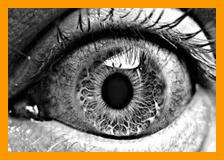


|
Japanese External Reverse Porro Prism Binoculars. Internet MUSEUM |

|
World’s Largest Collection of Miniature Binoculars? Weltweit größte Sammlung von kleinen Fernglas? Plus Grande Collection au Monde de Miniatures Jumelles? Самая большая в мире коллекция миниатюрных бинокль? 小型双眼鏡 の最大のコレクションですか? Största Samling av Miniatyr Kikare? Más Grande del Mundo en Miniatura Colección de Prismáticos? La Più Grande Collezione di Binocoli Miniatura? |
|
I am quite sure that it is. All my acquaintances involved with binoculars including those in the binoculars historical society seem to think so. There has been over 21 million views of the website, and nobody has mentioned a larger collection, or really another really large collection of these. The internet now connects everybody in the world in ways never before possible and spreads knowledge in ways never before possible, including reducing the language barriers. But that is the whole point. I was on the board of directors of a physical brick and mortar specialized museum for a decade or so (nothing to do with binoculars). But the exposure reach of the collection was limited to people walking through the door. So parts of my creating this multi lingual virtual museum was to explore what sort of outreach & utilization as an educational resource could be achieved on line. There are many aspects to this. One was to create global relevance by consciously addressing the distribution and marketing and brands of many regions. Another was to mix pure research with commentary and analysis of the social and historical factors that affect material goods (my training as an archeologist to view artifacts as a mirror of culture). And a fun aspect has always been to make the topics more interesting to a wider audience through factors like entertaining photos (also have a marketing background). Many thousands of photos of 1,000 binoculars might be good documentation but is pretty dull for everybody and it takes a lot of effort to be make that more interesting. There are specific reasons that deter large collections of these miniature binoculars. Until the age of internet auctions it would have been impossible to assemble such a sizable collection. Even now it requires lots of time and effort. Over the years I have visited flea markets (boot sales, street markets, swap meets, marché aux puces) around the world, including France (Les Puces in Paris), England, (Camden Passage & Brick Lane in London), Belgium, Canada, Mexico, and also all across the United States including Connecticut, Massachusetts, Nevada, Florida, New Mexico, California, New York, Pennsylvania, Arizona, North Carolina, Delaware, Georgia, Texas, Utah, Vermont, Maryland, Maine and probably flea markets in other states I have forgotten. This includes a couple of flea markets where you can spend 8 hours walking around quickly and not see everything. And I live 5 minutes from a good flea market and I see virtually all of the hundreds of millions of items that turn up there. I have rarely encountered these small binoculars at any of these used markets. So these are absolutely something that could only have been collected in an effective way in the age of internet international auctions and communications. Additionally only a portion of brands were ever available in any one country and even then distribution was extremely fractured. Also I think the extremely high percentage of these binoculars that need some repairs to be fully functional has deterred most would be collectors. Is this the world’s largest binocular specific website? Quite certain it is. It has been lots of fun creating it. If you enjoyed it, I’d be pleased to hear. miniature.binoculars@gmail.com |
|
Precedent Design? Präzedenzfall -Design? Précédent design? Прецедент Дизайн? 先例 のデザイン Prejudikat Design? Diseño Prejudikat? Disegno Precedente? |
|
The following information is based on information from the article “C.D. Ahrens (1837-1918) Optical Prism Worker of Every Description” by Stuart Talbot, FRAS, published in The Bulletin of the Scientific Instrument Society No 121 (2014), and provided to me by Peter Louwman. Additional information is from a history of C. D. Ahrens by Jean and Colin Gaskin which can be viewed at Peter Abrahams website at: http://home.europa.com/~telscope/temp/Gaskin.2011.C.D.Ahrens.pdf. |
|
An interesting pair of prismatic binoculars (or binocular double telescopes) exists in the Louwman Collection of Historic Telescopes in the Netherlands. They were created by Carston Diederick Ahrens (1837-1918),“the most famous maker of hand ground precision optical glass, polarizing Nicol prisms and quartz plates in the world during his lifetime” according to Stuart Talbot. Ahrens worked in and around London, England. The binoculars are of interest in the context of this website because the prism arrangement and physical presentation (though not the size or objective tubes) is similar to the design later used by Baumann in the Fata Morgana. Ahrens was issued a British patent number of 17102/84 on Dec 31, 1884. No patent details survive, and there is contemporary evidence the patent was not completed (exhibited, but not registered plus completed). Stuart Talbot notes that in “Binokularen Instrumenten” published by Carl Zeiss Jena historian Prof. Moritz von Rohr in 1920, and Rohr states that Carston Ahrens applied for an English patent for a double telescope in 1884, but the patent was not completed. Rohr stated that the firm of Carl Zeiss was in possession of an example of the Ahrens binoculars, but that Ahrens had not utilized the advantage of image erection by Porro prisms to result in shortened [objective] tubes. Zeiss subsequently did so with their 1894 compact binoculars, and then Baumann took miniaturization quite a bit further with his 1919 design. |

|
Ahrens Photos courtesy of Peter Louwman, Louwman Collection of Historic Telescopes, The Netherlands |

|
It is amusing to note that the United Binocular Co. of Chicago Illinois USA imported a Japanese 20x40 reverse poro prism design that seems to be quite similar to the 1884 Ahrens binoculars, which they called “the Falcon” in literature, and which they sold for a short time around 1956. That design did not seem to persist for more than a couple years, and was presumably not popular, probably because 20x does not lend itself well to being hand held. |
|
Day and Night Optical Performance: Actual and Illusory. Tag und Nacht Optische Leistung: Tatsächliche und Illusorisch. Jour et Nuit Performance Optique: Actual et Illusoire. День и ночь Оптические характеристики: Фактические и иллюзорным. 昼 と夜の光パフォーマンス:実際と錯視。 Dag och Natt Optisk Prestanda: Faktisk och Illusorisk. Día y Noche Rendimiento Óptico: Real e Ilusorio. Giornata e Notte Ottica: Effettiva e Illusoria. |
|
Some non electronic binoculars have been promoted as being for night time use, or have had some associated claims of superior night time performance. An example of this is my Japanese Karlstlin miniature 8x20 binoculars with a German sounding brand name and intended for the German language market in Europe, which are marked “TAG-NACHT” (Day-Night). Binoculars with very large diameter objective lenses do tend to pass more light, and binoculars which have every optical surface coated with multi layered non-reflective coatings (usually marked “fully coated”) will pass more light than non coated ones, and will therefore will perform better in low light conditions. These Karlsten binoculars actually have none of those attributes. |
|
True passive low light optical high performance or night vision using ambient light (starlight and moonlight) is often achieved in weapons sight, monocular, and binoculars configurations in the form of optoelectronic Night Vision Devices (NVD) by using photocathodes as light intensifiers. They work by accelerating electrons to strike a phosphor screen. There are considered to be 3 distinct generations of passive NVD with generation 2 adding a microplate and generation 3 adding gallium arsenide, and with light amplification from around 1,000x light amplification to around 40,000x, depending on the generation, intended cost, and the use of multiple cascading intensifiers. Military surplus provides a great source for high quality optical products at a fraction of their original price. An example of this is my 1970’s German generation one Zeiss/Eltro Orion 80/1 (Fero Z51) starlight night vision military weapons sight, as pictured above mounted on a .223 rifle alongside those Karlstlin TAG NACHT binoculars. This real night vision device used multiple cascading intensifier tubes: xx1211 plus xx1340 plus xx1440CJ, and though it is 45 year old technology, the scope works quite well. As an older design it is enormously heavy and streaks a bit more with light sources than newer technology. It was originally used by the Bundeswehr (German army) on their Gewer G3 rifle, on the MG3 machine gun, and on the Panzerfaust 3 and 44 anti tank rocket propelled grenade launchers. This night vision device probably had an original German government contract cost of around € 8,000 ($9,000 USD), more or less, but it’s military surplus price with an original huge hard case and with accessories was a more affordable 1/19 th or so of that original cost. |


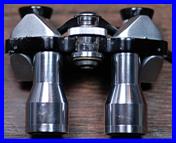


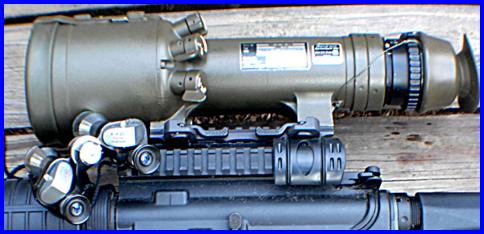












|
Analyzing Two Miniature Binoculars to Determine Common Origin. Analysieren Zwei Miniatur-Ferngläser zu gemeinsamen Ursprung zu Bestimmen. Analyser Deux Jumelles Miniatures pour Déterminer l'origine Commune. 2 つのミニチュア双眼鏡を分析して共通原点を決定する . Анализ двух миниатюрных бинокли, чтобы определить общее происхождение. Analysera Två Miniatyr Kikare att Bestämma Gemensamma Origin . Análisis de dos Binoculares Miniatura para Determinar el Origen Común . Analizzare Due Binocoli Miniaturizzati per Determinare L’Origine Comune. |
|
Some miniature binoculars have indications of who the actual manufacturers may have been (JB code, JE code, a logo or trademark) in addition to any retail brand under which the binoculars were being marketed. But lots do not. It stands to reason that if you closely examine two miniature binoculars that have some distinctive features that are common it might be possible to reach some conclusion about common manufacture. My friend Nico Westphal suggested that some Nippon Kogaku and OVO binoculars had common attributes suggesting a common origin. So lets test our that hypothesis. There are some parts that tend to be quite interchangeable on the various miniature binoculars (prism covers for a given power) and others parts that tend to be much more varied, such as objective lens barrels (length, shape, diameters) and eyecups (design, diameters, screw thread). |


|
21.01 mm |
|
21.24 mm |
|
77.97 mm |
|
21.48 mm |
|
21.26 mm |
|
76.00 mm |
|
16.14 mm |
|
15.85 mm |
|
8.22 mm |
|
8.06 mm |
|
OVO |
|
NIPPON KOGAKU |
|
NIPPON KOGAKU |
|
OVO |

|
14.37 mm |
|
14.21 mm |

|
7.31 mm |
|
7.91 mm |
|
18.2 mm |
|
18.6 mm |
|
17.32 mm |
|
17.41 mm |

|
CONCLUSION? There do not seem to be significant dimensional differences between the two binoculars: differences seem to be cosmetic (finish) differences. Both binoculars date from around 1948-1952 (occupied Japan binoculars production era). Based on a measured dimensional commonality of all visible parts, with no exceptions, a common origin is plausible. |


|
MINIATUUR JAPANSE VERREKIJKERS MINIATUROWE LORNETKI PIENOISKOOSKA JAPANILAINEN KIIKARIT μικροσκοπικά κιάλια ミニチュア双眼鏡 ống nhòm mini مناظير مصغرة اليابانيةچھوٹے جاپانی دوربین BINÓCULOS JAPONÊS EM MINIATURA DÛRBÎN JAPANESE XWEBIXWE دوربین دوچشمی ژاپنی مینیاتوری MINIATUUR JAPANESE BINOCULAERS MINIJATURNI JAPANSKI DALEKOZOR MINIATURNÍ JAPONSKÉ DALEKOHLEDY MALIIT NA LARAWAN JAPANESE LARGABISTA MINIATYURA YAPONIYA DURBIN BINOCOLO GIAPPONESE IN MINIATURA TEROPONG KECIL JEPUN TYHULASI AMANCINANE JAPANESE ỐNG NH Ò M MINIATURE NH Â T BảN సూక్ష్మ జపనీస్ దూరదర్శిని மினியேச்சர் ஜப்பனீஸ் தொலைநோக்கியின் KEKERAN JEPANG MINIATUR کوچني د جاپان د فير CASRIGA GHADAFI JAPANESE MINIJATURNI JAPANSKI DALEKOZORI MINYATI LONGVI JAPON È L Í TIL JAPANSKA SJ Ó NAUKI MINIAT Ü R T Á VCS Ö DADA JAPAN BINOPKULARI MINIATURE JAPANESE MAKA ANYA ABUO KAKANG'ONO ZOYANG'ANIRA JAPANESE |
|
CONTACT US WITH INFORMATION OR COMMENTS: miniature.binoculars@gmail.com |
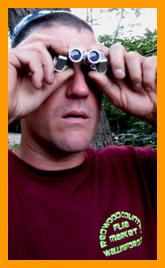
|
United Binocular Co 20x40 “Falcon” binoculars Collection of Mark Ohno |


|
When United said “United STANDARD Quality” they meant the co set a high standard for quality, not ordinary quality. |
|
Zeiss /Electro Orion Fero Z51 Night Vision Weapons sight and Karlstlin Tag Nacht binoculars |

|
ENJOY THE SITE? Consider Participating The website represents the unpaid effort of mostly one person and whenever anybody looks at it, then it actually costs a little bit of money out of pocket. Not a big deal and with a commitment to doing a lot with a little the website is hosted at Nearly Free Speech.net and it is very cost effective. But with as many as 1/4 million page views in busy months, each view does cost a little bit of money and over time it adds up. We really like to encourage active viewer participation: photos, information, feedback, questions, comments, binoculars, anything. Maybe you don’t have any information or photos to contribute, but if you enjoyed this website then please also consider supporting the effort with a tiny gift: 50¢, 75¢, price of a candy bar or cup of coffee...anything. Every 75¢ donated (which goes directly to the web hosting account and can’t be used for anything else) would pay for at least 15,000 (and perhaps a lot more) people to view the website. Many thanks to people who have helped with photos information, feedback, translation improvements, and donations. |
|
To donate a small sum to help host this site paste the following on your browser: https://www.nearlyfreespeech.net/ contribute/miniaturebinoculars.com |
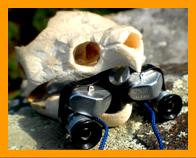
|
BINOCULARS RESEARCH WEBSITE, NOT FOR PROFIT.FERNGLAS-FORSCHUNGS-WEBSITE, NICHT EWINNORIENTIERT SITE DE RECHERCHE SUR LES JUMELLES, À BUT NON LUCRATIF |
|
Binoculars Eye Relief . Entfernung vom Auge zum Fernglas. Distance de l'œil aux Jumelles. Расстояние от глаза на бинокль. 目 からレンズまでの距離 . Ögat Avstånd för Kikare. El Ocular de los Prismáticos. Occhiali di Binocolo. |
|
Eye relief with binoculars is the distance between the eye and the closest lens surface of the binoculars (the ocular lens). The eye relief of binoculars is designed into the lenses and lens configuration. People that use eyeglasses find that the eyeglasses hit the eyecups and push the binoculars further away from the eye, preventing using the binoculars at the eye relief distance designed for the binoculars, which interferes with (clips or reduces) the image being viewed. So eyeglasses wearers often remove the eyecups. And this a reason that miniature binoculars are sometimes encountered with both eyecups missing. |
|
When looking through binoculars, when the eye at the designed eye relief distance, Eye relief is eye surface to first lens) the image is full size as designed with the intended angle or field of view (view side to side) . |
|
If we perch eyeglasses out on the nose of the viewer, then the binoculars are pushed further away by the stacking height of the eyeglasses plus the eyecups of the binoculars, and the eye relief is is greater than what the binoculars were designed for. The result is a clipped or vignetted image (reduced field of view). |
|
Collecting Binoculars with Consecutive Serial Numbers . Suchen Sie nach Mini Fernglas mit aufeinanderfolgenden Seriennummern. La Recherche de ces Miniatures Jumelles que Consécutives ont Numéros de Série. Поиск миниатюрные бинокль с последовательными серийными номерами. 双眼鏡 の連続したシリアル番号 . Samla Kikare med Sfterföljande Serienummer. Los Prismáticos en Miniatura con Números de Serie Consecutivos? Accolta Binocolo con Numeri Seriali Consecutivi. |
|
Collectors like variations, particularly exclusive or scarce variations (prototypes, errors, sales samples, cutaways.) Similarly, it is quite challenging to obtain for one’s collection items having consecutive serial numbers, and on items of some age and wide distribution it may prove impossible. After obtaining some close numbers over the years I was extremely surprised and pleased to obtain consecutive numbered Fata Morgana binoculars. |


|
7230 |
|
7237 |
|
7 - APART |
|
Japanese Ensign 6x15 binoculars, serial number 7230 and 7237, seven numbers apart on the original production line probably around 75 years ago. Collection of Mark Ohno, USA |

|
41431 |

|
41435 |
|
4 - APART |


|
German Optistar binoculars serial number 41431 and identical binoculars [Optistar though not Optistar brand marked] serial number 41435, four serial numbers apart on the original production line around 89 years ago. Collection of Mark Ohno, USA |
|
With eyeglasses, if the eyecups are removed, the glasses wearer is able to use the binoculars closer to the designed eye relief. This is probably why so many binoculars are missing eyecups. It is also the reason most binoculars eventually changed from hard plastic eyecups to collapsing rubber eyecups that better accommodate people that wear and don’t wear eyeglasses. |

|
NO GLASSES |
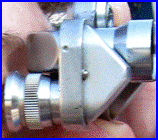

|
Intended Eye Relief (lens surface to eye) as designed by the binoculars manufacturers (no glasses distance)) |
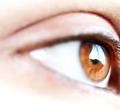


|
Binoculars pushed too far away from lens surface to eye so image is cropped or vignetted |
|
GLASSES WITH BINOCULARS WITH EYECUPS (push the binoculars away eye to ocular lens) |

|
ocular lens |
|
ocular lens |

|
GLASSES WITH BINOCULARS WITH EYECUPS REMOVED |

|
Intended Eye Relief (lens surface to eye) as designed by the binoculars manufacturers (no glasses distance) |
|
ocular lens |
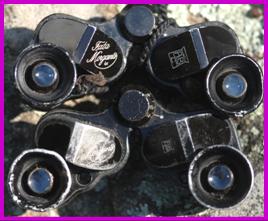
|
14491 |
|
14494 |
|
3 - APART |
|
German Fata Morgana (Alfred Baumann Cassell) binoculars serial number 14491 and Fata Morgana binoculars serial number 14494, three serial numbers apart on the original production line around 95 years ago. Despite only being 3 numbers apart, note the different size ABC logo. Collection of Mark Ohno, USA. |

|
And then... CONSECUTIVE binoculars !!!!! |

|
German Fata Morgana (Alfred Baumann Cassell) binoculars serial number 9613 and Fata Morgana binoculars serial number 9614 . from 1921 or 1922. Binoculars serial number 9613 were obtained from Serbia, (thanks Papi ć Darko of Novi Sad, Vojvodina) and binoculars serial number 9614 were obtained from the UK. What are those odds ??? Collection of Mark Ohno, USA. |




|
Did Distributors of Binoculars Withhold Information? Haben Distributoren von Ferngläser Informationen Verweigert? Les Distributeurs de Jumelles ont-ils renoncé à L'information? Дистрибьюторы биноклей скрывали информацию? 双眼鏡 の販売代理店は情報を保留しましたか? Gjorde Distributörer Kikare Undanhålla Information? Heeft Distributeurs van Verrekijkers Informatie Achterhouden? ¿Los Distribuidores de Prismáticos Retuvieron Información? I Disributori do Binocoli Hanno Trattenuto Informazioni? |
|
YES. They have always been rather secretive. One would think that if you had the original retail boxes and paperwork that the owner received when they bought a pair of binoculars, then you would have all sorts of information about the brand, distributor or importer, or manufacturer. I have lots of binoculars with original boxes and paperwork and in most cases, except for high end brands, there is absolutely no revealing information of any kind. I have been chasing information on Zenith and Super Zenith binoculars and their distribution for several years. Many of the boxes that Zenith and Super Zenith binoculars came in were so secretive they didn’t even give the brand name on the box. Some examples of Super Zenith super generic boxes are shown. |



|
French LeFils binoculars. Französisch LeFils Fernglas. LeFils Françaises Jumelles. Французский LeFils бинокль . Franska LeFils Kikare. LeFils Franceses Prismáticos. Binocolo Francese LeFils. |
|
The LeFils 8x reverse porro prism binoculars with external prism covers share some design elements with the Baumann Fata Morgana and Optistar binoculars; they are described as a “skeleton” style; and they are contemporaneous to the Baumann designs. However they are not so miniature in size, and they are a central focus binocular. They are observed advertised around 1922-1924. The LeFils binoculars are not part of the Fata Morgana to Nikko Mikron to post war Japanese miniature binoculars design lineage. While the maker of the LeFils binoculars is generally considered as being unknown, my research into 1920s documents strongly suggests that the “LeFils” brand (“The Son” in French) was a product of French Optical maker “E. Colmont, Valette, & Cie” (as the name appears on their patents) of 37 & 39 Ave de La Republique, Paris, France. They appear to have also been known as “Colmont et Cie”; as “Vallette & Cie”; as “Establissements P.E. Valette”, and are also commonly observed as “Colmont” with the 37-39 address appearing on a lot of WWI era Galilean Field glasses and their cases, and with “Lefils Paris” commonly appearing on decorative turn of the century opera glasses. |
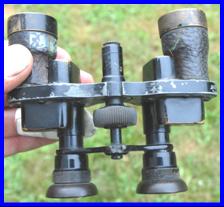
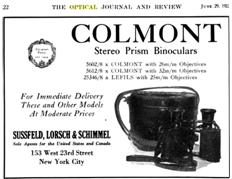

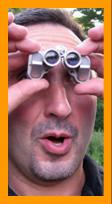



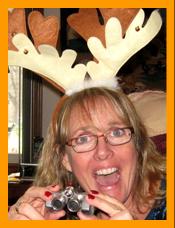
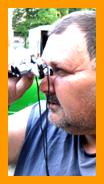






![Text Box: CLICK ON PAGE LINE. CLIQUEZ SUR LA LIGNE DE PAGE. KLICKEN SIE AUF SEITENZEILE. HAGA CLIC EN LÍNEA DE PÁGINA..[ページ行]をクリックします。НАЖМИТЕ НА СТРОКУ СТРАНИЦЫ. ALSO SEE INDEX.](image676.gif)


